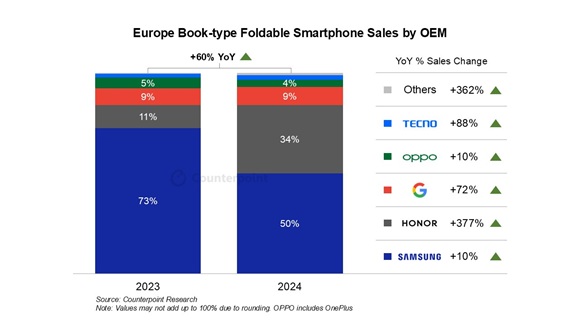Software engineers brace for foldable smartphone development
There was a time when we defined developers as developers.
Then, over the years, they became mobile-first developers, cloud-native developers, API-first orchestration-aware developers and then… AI-centric developers.
Coming full circle, we may be at the point where programmers start to consider themselves foldable smartphone developers i.e. the additional screen real estate providing them with a wider canvas through which to express application functions.
While so-called “mobile optimisation” will still exist (so that fully functioning web pages can be presented in a scaled down version in the palm of your hand across no more than about six inches, today… there’s an additional six inches or so to play with) and so this means software application development may have to resasses how it approaches this space with the toolkits and development environments in use today.
Smartphone manufacturer Honor (stylised as HONOR) reminds us that the European foldable smartphones are still a niche segment, but sales are growing rapidly, especially for book-type foldables.
Book-type foldables
The company suggests that increased competition (from the likes of itself) has eaten into Samsung’s near monopoly of the book-type foldables segment. With the forthcoming HONOR Magic V5, competition is expected to intensify further in 2026 with the expected entry of Apple into the foldable smartphone market.
According to research from Counterpoint, “2024 was a pivotal year for the European foldable smartphone market. While still a relatively small segment – accounting for around 2% of the total smartphone market – foldable smartphone sales increased by 37% year-on-year. Within that, the main driver was the book-type form factor, for which sales increased by 60% year-on-year. Nevertheless, book-type foldables still only account for less than 1% of the total market, with consumer concerns around price, durability and use-cases.”
Honor says it has been on something of a progression curve, its Magic V3 was the thinnest and most durable book-type foldable to date… and it featured strong technologies behind its camera and battery.
Counterpoint also says that other OEMs also upped their game, for example with the Google Pixel 9 Pro Fold and the TECNO Phantom V Fold 2. Although it was still leading the market, the future looked ominous for Samsung, as (according to the analysts) it was “seemingly struggling” to make any major improvements to its Galaxy Fold range
The Magic V5 features a 5,820mAh battery, much bigger than the Fold7’s 4,400mAh one and it charges much faster too. It is also IP59 rated, compared to the Fold7’s IP48 rating.
Steel Super Hinge
Today we can say that Honor is (arguably rightly) most excited about its strongest and most advanced “Super Steel Hinge”, which analysts say is likely to be more durable.
Counterpoint researchers suggest that increased competition is usually a good thing, driving innovation and pushing down prices. Its analyst team says that while it doesn’t think mass-market adoption will happen any time soon, it does expect foldables to take an increasingly larger share of the premium segment from next year.
This overview is presented at a time when we could be about to see a huge change in terms of the way software application developers approach the mobile market.
Will all (or the majority of) mobile development now be aligned to the book-type foldables segment?
Well, it’s not an open and shut case, not quite yet.




